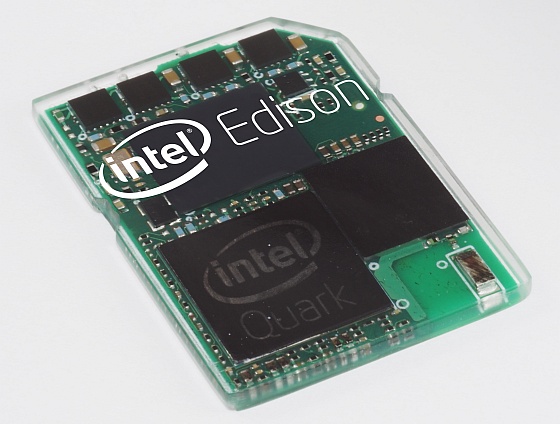Intel’s small SD card-sized computer may not be as small as originally thought after development of the project takes a different course.
Earlier this year, Intel showed off a small chip that was actually a PC, and a big deal was made out of it of just how Intel could have squeezed a Linux-based PC with Bluetooth and WiFi into a form factor as big as an SD Card.
Instead of being based on the Quark SoC, which is designed specifically for wearable PC’s and those which are designed to be tiny, the small Intel PC will actually be powered by a more traditional and somewhat bigger Atom chip. That’s the same chip that powers many Windows tablets, some netbooks, and hybrid computers, and whilst they are small, they are nowhere near as small as what Intel demonstrated on stage at CES.
While we work to extend the Intel Quark SoC family with multi-core offerings, we’ve prioritized bringing the board powered by the 22nm Silvermont dual core Intel® Atom SOC to market first to best meet a broad range of market needs.
The Edison PC powered by atom would deliver more power and connectivity options compared to Quark, and at a cheaper price point, but the issue isn’t around functionality or price, but around size. Edison was so impressive because of its sheer size and the possibilities it created by being so small and able to be placed into pretty much anything. Edison could have even been embedded into coats or hats, but now being powered by atom, it may now not be possible.
Intel change to Atom
Admitadly, Intel have taken to their blog to amend their aims, and admit that it will actually be larger than an SD card now.
Slightly larger than an SD card, Intel® Edison will provide more value for our customers by simplifying the design process for the companies creating the designs, increasing the durability and providing additional cost savings in comparison to building for an SD form factor.
Whilst unfortunate, no doubt Intel will still find a way to pack the Intel Atom into a tiny package so they can still achieve what they wanted with the Edison project.



